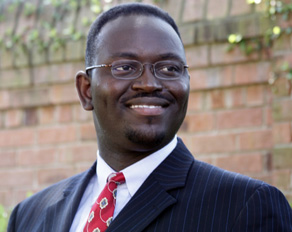After the horrible Charleston church slaughter last month, the public response from the National Rifle Association mostly came from long-time board member Charles L. Cotton.
![]() The nine African Americans were shot and killed after they welcomed a killer into their Bible study because, said Cotton, their church pastor, South Carolina Sen. Clementa Pinckney, did not allow guns at his church. Earlier, Pinckney, who was among the victims, had voted against a concealed carry law in his state.
The nine African Americans were shot and killed after they welcomed a killer into their Bible study because, said Cotton, their church pastor, South Carolina Sen. Clementa Pinckney, did not allow guns at his church. Earlier, Pinckney, who was among the victims, had voted against a concealed carry law in his state.
“Eight of his church members, who might be alive if he had expressly allowed members to carry handguns in church, are dead,” said Cotton in an online forum. “Innocent people died because of his political position on the issue.”
Any one surprised by Cotton’s thoughtless statements hasn’t been keeping up. For at least a generation, gun rights advocates have been repeating the mantra that the best defense against a bad guy with a gun is a good guy with a gun. To bolster their argument, they often rely on a made-up statistic, that people use guns in self-defense as often as 2.5 million times every year. That figure comes to us courtesy of John Lott, founder of the Crime Prevention Research Center, whose “more guns, less crime” research has been debunked over and over again.

The Rev. Clementa Pinckney should have allowed guns in his church, a member of the NRA said.
Yet “more guns” continues to be the NRA’s battle cry. Most recently, a report from the Violence Prevention Center examined statistics from the FBI, among other entities, to see just how many justifiable homicides were committed with a gun. That would be the good guys with guns, acting in defense against a serious potential threat. In 2012, just 259 justifiable homicides involving a private citizen using a firearm were reported to the FBI’s Uniform Crime Reporting Program. Even allowing for some instances going unreported, it would be beyond a stretch to believe the number could be increased by 9,600 times, to NRA-level stats.
That same year, 2012, there were 8,342 criminal gun homicides. Or, in NRA parlance, that’s 32 bad guys for every one good guy. That same year, Connecticut was among 13 states that reported no justifiable homicides.
The frustrating part about these discussions is that these statistics, says Ron Pinciaro, executive director of Connecticut Against Gun Violence, most likely will fall on deaf ears. Sensible gun owners might pay attention; the rabid base of the NRA may be beyond the reach of data. As far as the efficacy of guns for self-defense, “the argument has gone on forever,” said Pinciaro. Part of the issue is any research into gun violence is subject to backlash.
“That’s been one of the tactics of our opposition from the beginning,” Pinciaro said. “They have managed to convince a lot of people that guns are necessary for freedom, as a defense against government. They’ve been able to convince a lot of politicians not to oppose them, and they’ve been able to convince the courts this is what the founders intended. That hasn’t happened by accident; that’s been part of their strategy. They attack every study that comes out.”
The Law Center to Prevent Gun Violence recently ranked Connecticut second (behind California) in the nation for strong gun laws, though no new significant gun laws were passed in 2014, according to the center. In the most recent session, Connecticut legislators didn’t pass a bill that would have required people who’ve been served with a temporary restraining order to surrender their firearms and ammunition within 24 hours. Perhaps, says Pinciaro, legislators don’t want another session dominated by gun discussions, as the session was in the months after Newtown.
But the NRA doesn’t sleep. It may go quiet for a few hours after every mass shooting, but it doesn’t sleep, and neither should attempts to pass sensible gun laws.
Susan Campbell is the Robert C. Vance Chair for Journalism and Mass Communication at Central Connecticut State University. She can be reached at slcampbell417@gmail.com.